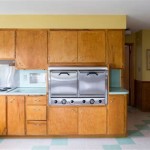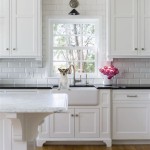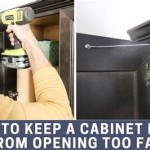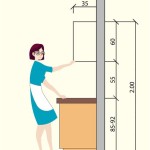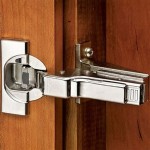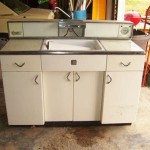Building Kitchen Cabinets Out of Plywood: A Comprehensive Guide
Plywood, a versatile and durable material, is an excellent choice for constructing kitchen cabinets. Its strength, stability, and affordability make it a preferred option for DIY enthusiasts and professional cabinet makers alike. This guide will provide a comprehensive overview of building kitchen cabinets out of plywood, covering essential considerations, steps involved, and helpful tips.
Choosing the Right Plywood
Selecting the appropriate plywood is crucial for successful cabinet construction. Different types of plywood are designed for specific purposes, and understanding their characteristics will help you make an informed decision.
- Sanded Plywood: This type of plywood features a smooth, sanded surface, ideal for cabinet doors and drawer fronts where a finished look is desired.
- Baltic Birch Plywood: Known for its strength and high quality, Baltic birch plywood is particularly well-suited for cabinet boxes, shelves, and drawer sides.
- Marine Plywood: This plywood is treated with a moisture-resistant sealant, making it suitable for areas with high humidity, such as kitchens.
When choosing plywood, consider the thickness required based on the dimensions and weight of the cabinets. For cabinet boxes, 3/4-inch plywood is generally recommended, while 1/2-inch plywood can be used for shelves and drawer bottoms.
Essential Tools and Materials
Building kitchen cabinets out of plywood requires a set of tools and materials. Here is a list of essentials:
- Hand tools: Measuring tape, pencil, level, combination square, saw, drill, screwdriver, router, clamps, sandpaper, and a hammer.
- Power tools: Miter saw, table saw, jigsaw, and a drill press (optional).
- Materials: Plywood, cabinet hinges, drawer slides, screws, glue, paint or stain, primer, and finishing materials.
The specific tools and materials required may vary depending on the design and complexity of your cabinets. It's always advisable to have a complete inventory before starting the project.
Steps in Building Plywood Kitchen Cabinets
Building kitchen cabinets involves a series of steps, from planning and design to construction and finishing. Here's a breakdown of the process:
Step 1: Planning and Design
Before you begin cutting wood, it's essential to have a well-defined plan. Determine the layout, dimensions, and functionality of your cabinets. Consider the available space, your storage needs, and your desired aesthetic. Sketch out your design and create detailed drawings or blueprints for reference.
Step 2: Cutting Plywood Components
Using your tools and plans, carefully cut the plywood pieces according to your dimensions. This step requires precision, and mistakes can be costly. Use appropriate safety gear and double-check your measurements before making cuts.
Step 3: Assembling Cabinet Boxes
Glue and screw together the sides, back, and bottom panels to create the cabinet boxes. Ensure the joints are tight and secure. Use clamps to apply pressure while the glue dries.
Step 4: Installing Shelves and Drawers
Once the boxes are assembled, add shelves and drawers as needed. Measure and cut shelf supports, and install them securely using screws or shelf pins. Install drawer slides according to the manufacturer's instructions.
Step 5: Attaching Doors and Drawer Fronts
After the shelves and drawers are installed, attach the cabinet doors and drawer fronts using hinges. Choose appropriate hinges based on the door style and weight.
Step 6: Finishing
The final stage involves sanding, priming, and applying a finish. Sand the cabinets to smooth out any imperfections. Apply primer to create a uniform surface for painting or staining. Choose a finish that suits your style and complements the kitchen décor.
Tips for Building Kitchen Cabinets
To ensure successful cabinet construction, consider these helpful tips:
- Use a jig for accurate cuts: A jig can help you make precise cuts with your saw, ensuring clean and consistent results.
- Pre-drill holes for screws: Pre-drilling holes will prevent the wood from splitting when inserting screws.
- Clean up wood dust: Keep the workspace clean and free of dust to prevent contamination of the finish.
- Use a quality glue: Opt for a strong, moisture-resistant glue to create durable bonds.
- Plan for adjustments: Be prepared to make adjustments as needed. It's better to check for errors early on rather than make corrections later.
Building kitchen cabinets out of plywood can be a rewarding project that allows you to create custom storage solutions that fit your specific needs and style. By following the steps outlined in this guide, you can successfully construct high-quality cabinets that will enhance the functionality and beauty of your kitchen for years to come.

What Plywood Is Best For Building Cabinets Precision

Cabinets Plywood Workbench Plyw Diy Kitchen Cupboards Cabinet Plans

Building Plywood Upper Kitchen Cabinets

Diy Kitchen Cabinets Made From Only Plywood

Plywood Cabinet Construction

Pin On Wood Projekty

Face Frame Cabinet Plans And Building Tips Family Handyman

How To Build Frameless Base Cabinets

Plywood Thickness Options For Painted Kitchen Cabinets

Choosing The Best Type Of Plywood For Cabinets Columbia Forest S
Related Posts

